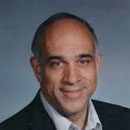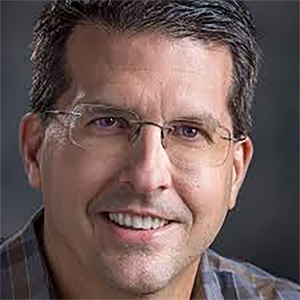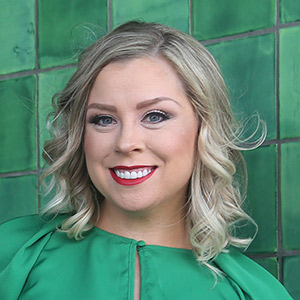In memoriam: Celebrating the life of 'Lost Chicago' author David Garrard Lowe and his love affair with Chicago
Published in Books News
Its pages well-thumbed and portions underlined in ink, the book “Lost Chicago” sits on bookshelves across Chicago and continues to amaze and inspire.
It is a poetic photographic essay about our bygone public buildings and private residences. It is harshly critical of the city’s once cavalier attitude toward architecture, filled with 200-some photos and prints, written in elegant, passionate prose.
I picked up my copy again after hearing the news that its author, David Garrard Lowe, had died in New York City on Sept. 21. He had been in hospice care. He was 91 but remains alive in this book. And so I read, “Perhaps, by showing the splendor which has been lost, I might, in some small way, help to preserve that splendor not yet departed.”
He had not lived in Chicago for decades but he and his book have had a profound impact on the city. Blair Kamin, the Pulitzer Prize-winning former architecture critic for this newspaper told me, “(David’s) book was — and still is — required reading. Mine is thoroughly marked up. It’s timeless but very much a product of its time.
“Published in 1975, three years after the senseless demolition of Adler and Sullivan’s Chicago Stock Exchange Building, ‘Lost Chicago’ crystallized the idea that the city’s past should be — no, must be — part of its future. The book’s power is grounded in the fact that it’s deeply personal. Lowe wasn’t looking at architecture in isolation; he saw it as part of life, starting with his own life.”
Edward Keegan, an architect and biweekly architecture columnist for the Tribune, tells me, “This book is a cautionary tale that Chicago continues to overlook as we continue to squander our architectural legacy on a regular basis. I only met David once, at an event where I sat with him for dinner and then introduced him for a program. He was smart, gracious, and quite encouraging to a younger me.”
David Garrard Lowenstein (he would change his last name shortly after graduating from college) was born in Baltimore on Jan. 9, 1933. His mother, Grace, died when he was 6 and she had a number of relatives in Chicago, where her family’s history went back to the Pioneer Days. His father, Mose, was a noted professional horse trainer but not much of a hands-on dad. Fifty years old when his son was born, he led a nomadic life, living mostly in hotels near the nation’s race tracks.
He placed his son in the care of various relatives until he was enrolled in a military school near Lexington, Kentucky. The young man would return to Chicago in the summers and it was here, allowed to wander at will the city and its suburbs, that he was bewitched. As he would later write, “Chicago was always, for me, a magical city.”
One of his aunts paid for his tuition to Oberlin College, from which he graduated with an English degree in 1955 and followed that with a master’s degree in literature from the University of Michigan. He moved to New York City, where he would carve a successful career as an editor and writer for such prestigious magazines as Look, McCall’s and for a lengthy time at American Heritage.
But Chicago was in his blood and he traveled here often, increasingly troubled by the wrecking ball that was destroying so many of the fond sites of his youth, such structures as the Chicago Stock Exchange, North Western Railway Station, the Mecca, Palmer “castle” and Diana Court:
Kamin points out a paragraph from the “Lost Chicago” preface that perfectly captures his feelings: “They were an incomparable heritage mindlessly squandered, pieces of gold minted by the fathers and thrown away by the sons. I could not save them in their concrete form, but I was determined that somehow I would preserve their spirit. I would do it in the one way I could, by writing a book that would reveal them and their architectural predecessors in all their glory. Perhaps, by showing the splendor which has been lost, I might, in some small way, help to preserve that splendor not yet departed.”
Lowe had begun writing seriously about architecture in the 1960s for magazines and those stories eventually led to the publication of “Lost Chicago.” There were low expectations for the book, with New York-based Houghton Mifflin printing fewer than 1,000 copies. But one of those found its way into the hands of the Tribune’s Paul Gapp, the paper’s then-new architecture critic. In a full-page review, he wrote in part that the book was “one of the best (and in some respects unexcelled) pictorial essays on the city ever produced.”
That would spark sales and inspire other books, such as “Chicago Interiors” (1979), “Stanford’s White’s New York” (1992, and edited by Lowe’s friend, Jacqueline Kennedy Onassis), “Art Deco New York” (2004) and a new, expanded edition of “Lost Chicago” in 2010.
He lectured across the country and in Europe and, of course, in Chicago. I met him a few times, once sitting in for a radio interview with Studs Terkel that displayed Lowe’s deep intelligence and lively sense of humor. He wrote for Classic Chicago magazine, with which he shared delightful family photos.
He had hundreds of fans and among them was bestselling novelist Kurt Vonnegut. They met in New York and Vonnegut, son and grandson of architects was familiar with Chicago, where he spent some years at the University of Chicago and working for the City News Bureau, flipped for “Lost Chicago.”
As he told Lowe, “This is my favorite book in the world. I can’t stop reading it.”
©2024 Chicago Tribune. Visit at chicagotribune.com. Distributed by Tribune Content Agency, LLC.
















Comments